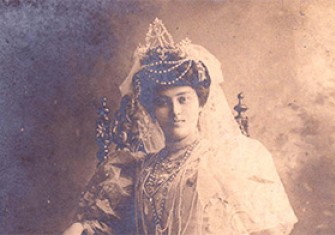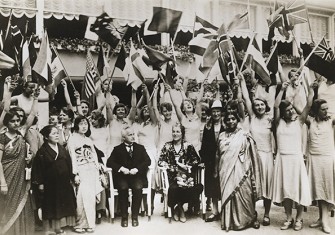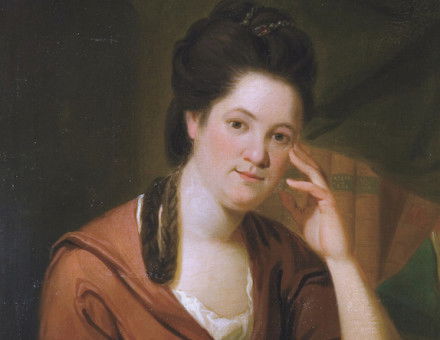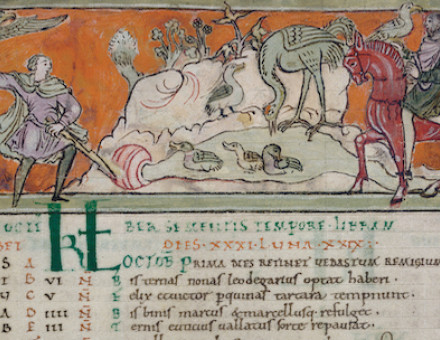Slavery, Women’s Suffrage and the American Civil War
As calls for women’s suffrage gained momentum following the Civil War, an uncomfortable racial faultline emerged dividing white suffragists from their African-American sisters.
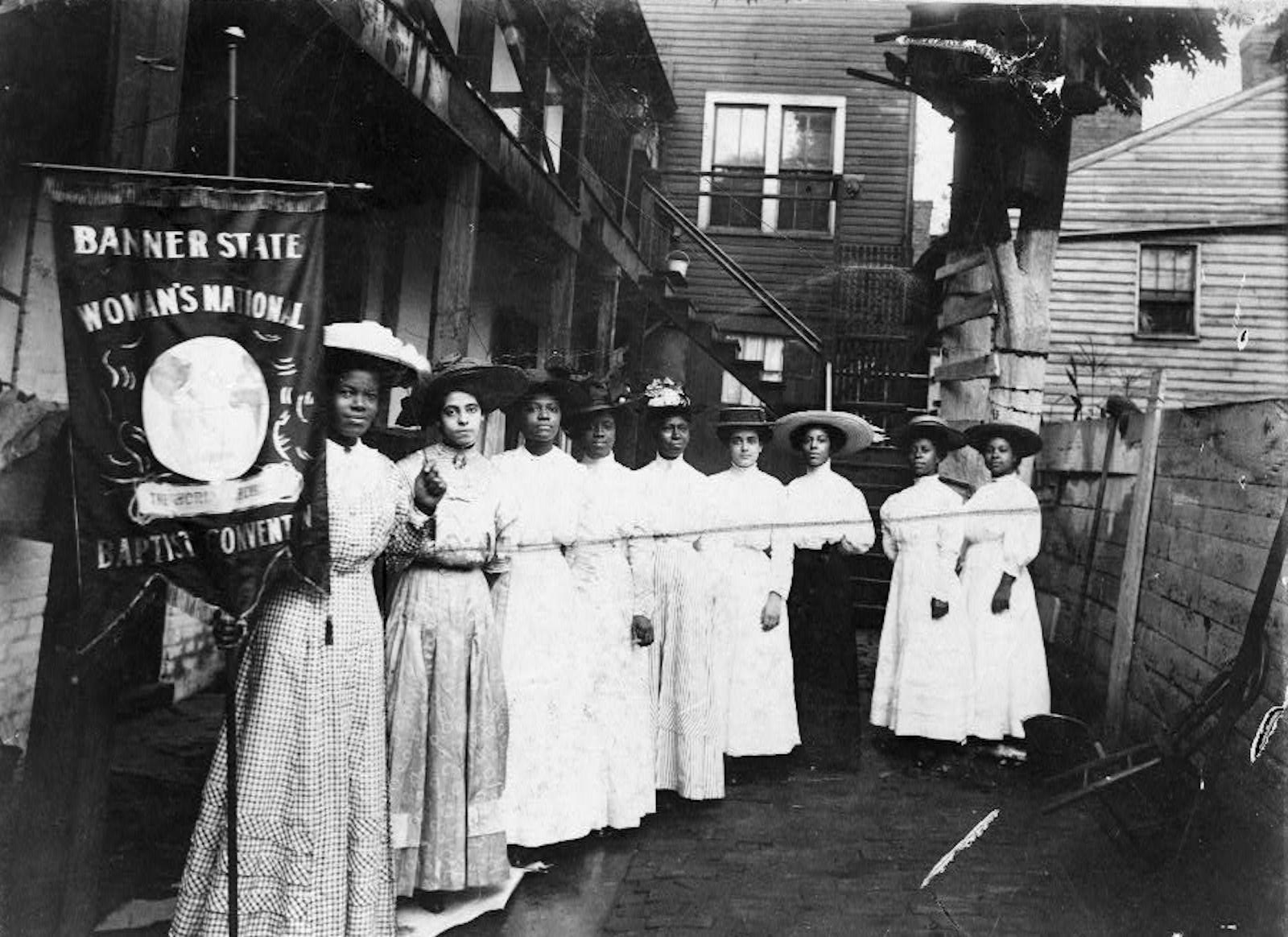
‘The prolonged slavery of woman is the darkest page in human history…’
These opening words from the six-volume History of Woman Suffrage (1881) were the standard fare of women’s suffrage rhetoric during the 19th century. Women had been a powerful force in the US anti-slavery movement in the early 19th century and notions of women’s rights owed much to the language of the anti-slavery debates. The word ‘emancipation’ was borrowed from abolitionism. Leading women’s suffragists served their campaigning apprenticeships in the abolitionist cause. Lucretia Mott and Elizabeth Cady Stanton, who were to become two of the most important American suffragists of the 19th century, met at the World Anti-Slavery convention in London in 1840. They went on to organise the Seneca Falls conference in New York in 1848, the first delegate conference in the US to call for votes for women. At the time, all white men had the vote, a situation that outraged elite white women such as Stanton, who was angry that ‘the ignorant Irishman in the ditch’ had civil rights while educated women did not. African-American women were also active in both the abolitionist and women’s suffrage movements. They included former slave and evangelical preacher Sojourner Truth, who, though illiterate, was a commanding speaker. She challenged a conference at Ohio in 1851, in which the paternalist image of delicate middle-class women was dominant. There was reluctance among some delegates even to allow her to speak, but the chair, Frances D. Gage, called them to attention and bid them listen. Truth said:
I think that ‘twixt the niggers of the South and the women of the North all talking about rights, the white man will be in a fix pretty soon. But what’s all this about? That man over there says that women need to be helped into carriage and lifted over ditches, and to have the best place everywhere. Nobody helps me into carriages or over mud puddles, or gives me any best place. Ain’t I a woman?
She described her work in the fields and the birth of her children, who were sold into slavery: ‘If my cup won’t hold but a pint and yours holds a quart, wouldn’t you be mean not to let me have my half-measure full?’
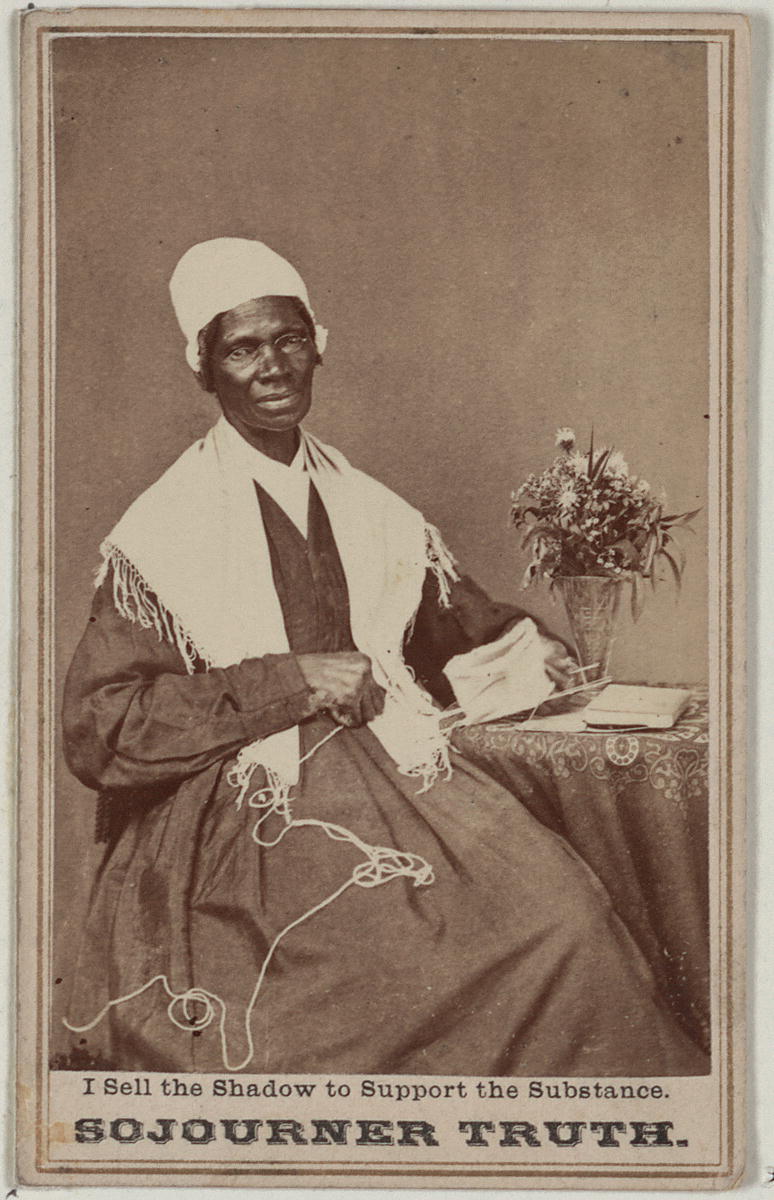
Sojourner Truth challenged the underlying principle of the convention’s claim to represent women at all if it failed to represent poor working women. She embodied the truth they wished to avoid: if they were radical abolitionists calling for the vote for women, that meant a vote for black women, too, however poor they were.
During the Civil War, Truth worked to recruit black men. She joined with Elizabeth Cady Stanton and Susan B. Anthony in the Women’s Loyal National League to make the emancipation of slaves part of the US Constitution. Anthony worked as an organiser for the American Anti-Slavery Society in New York, travelling the state to spread the message by arranging meetings, putting up posters and distributing leaflets.
The abolitionists’ work came to fruition with the 13th Amendment, to abolish slavery. However, after Lincoln’s assassination in April 1865, his successor as president, Andrew Johnson, welcomed the readmission of Confederate states to the union and, during the period of reconstruction, they passed laws restricting the rights of African-Americans, the so-called ‘Black Codes’, which virtually reproduced slavery. The war seemed to have been fought and won for nothing. The solution for abolitionists was to campaign to give the vote to black men, with a 14th Amendment. This would also serve to shore up the Republican party against the southern Democrats.
It was an obvious move to link the two issues of rights for black people and for women, given the ties between abolitionists and women’s campaigners. In keeping with this, Stanton and Anthony converted their organisation into the American Equal Rights Association in May 1866. There were tensions from the start over the 14th Amendment. Women suffragists felt it was against their most basic principles: it would give more power to men and do nothing for women. President Johnson and the Republicans, however, would not countenance the realistic alternative: of giving just white women the vote, as white women in the South would probably vote Democrat. White women’s suffrage was therefore not on the Republican agenda at this stage. The mood among the campaigners was balanced between white women, who were diffident about fighting for the rights of mainly uneducated black men, and black men who showed no enthusiasm for the rights of white ladies, who seemed to have comfort enough, at least compared with their own lives. Sojourner Truth commented on the controversy: ‘There is a great stir about coloured men getting their rights, but not a word about the coloured women.’ Shrewdly, Truth said she wanted to keep arguing for women’s suffrage before the political climate changed. White women needed the vote, but black women needed it more, having less education and a more limited choice of jobs. She depicted black men as idlers, living off their womenfolk. The most important right she could have, she insisted, was merely the right to equal pay, not to be paid half what a man received. Women’s suffrage was about making changes to the economy to make life fairer for women:
‘If coloured men get their rights, and not coloured women theirs, you will see the coloured man will be masters over the women, and it will be just as bad as it was before.’
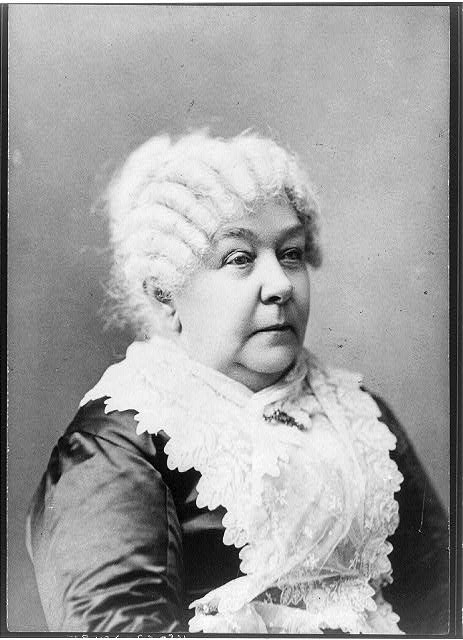
Stanton opposed the enfranchisement of black men if women did not get the vote at the same time. She would not trust black men to make laws for her because ‘degraded, oppressed himself, he would be more despotic with the governing power than even our Saxon rulers are’. In default of universal suffrage, she preferred an educational franchise so ‘this incoming tide of ignorance, poverty and vice’ would be outweighed by the ‘virtue, wealth and education of the women of the country’. An educational requirement for the ballot became the dominant suggestion among women’s suffragists, which would keep political power in the hands of the educated, which meant white men and women.
The black woman was outcast: as a woman, because of her ethnicity and her lack of education. African-Americans and women currently had no vote; but, even if Stanton’s principle was accepted, so that educated men and women, black and white were enfranchised, then poor, illiterate Sojourner Truth would still be excluded, notwithstanding that she had served so well as a symbolic black woman at Stanton’s meetings. The 14th Amendment was passed in 1868, introducing the world ‘male’ into the US Constitution for the first time, giving all men the vote. Black men supposedly had the right to vote, therefore, but the penalties for disenfranchising them were so slight it was an open invitation for states to do so and they did. These abuses led to a further proposal, for a 15th Amendment, which absolutely forbade discrimination on grounds of race (but not on grounds of gender). This prolonged the debate and the conflict between women’s suffragists and abolitionists. The uncomfortable question was still unanswered: were women’s suffragists in favour of black male suffrage or not? Their concerns were certainly not colour prejudice: disgust at the thought of ‘ignorant’ black men having power was matched by an equal feeling about ignorant European and Asian immigrants. As Truth’s biographer Nell Irvin Painter wrote of Stanton and Anthony: ‘As they pulled farther away from the ideals of universal suffrage, their language became increasingly nativist, racist and classbound.’ Railing against the waves of immigrants entering the US from Ireland, Africa, Germany and China, Stanton expressed her disgust at an 1869 conference held in Washington DC that ‘Patrick and Sambo and Hans and Yung Tung, who do not know the difference between a monarchy and a republic’ should make laws for women who were excluded from the ballot. How could politicians ‘make their wives and mothers the political inferiors of unlettered and unwashed ditch-diggers, boot-blacks, butchers and barbers, fresh from the slave plantations of the South and the effete civilisations of the Old World?’ Her old ally and supporter of women’s suffrage, the black leader Frederick Douglass, was to deplore such bigotry, but he defended her:
‘Let me tell you that when there were few houses in which the black man could have put his head, this woolly head of mine found a refuge in the house of Mrs Elizabeth Cady Stanton, and if I had been blacker than 16 midnights, without a single star, it would have been the same.’
Anthony, defending the proposition of women first, argued from the premise of education:
‘We say, if you will not give the whole loaf of suffrage to the entire people, give it to the most intelligent first. If intelligence, justice and morality are to have precedence in the Government, let the question of the woman be brought up first and that of the Negro last.’
Striking a gender blow at Douglass and picking up his theme of regard for Stanton, she jibed: ‘Mr Douglass talks about the wrongs of the Negro; but with all the outrages that he today suffers, he would not exchange his sex and take the place of Elizabeth Cady Stanton.’ Some suffragists, such as Lucy Stone, applauded the amendment to enfranchise black men, as a genuine if partial democratic advance, but the mood was divided. White female suffragists such as Stanton and Anthony blamed male abolitionists for betraying the women’s suffrage cause; black and white abolitionists felt betrayed by the women who they felt should have been united in applauding an abolitionist victory for black men. Black women had been betrayed by both: women who would no longer support the black cause and abolitionists who would no longer support the women’s cause. Frances Harper, a black woman suffragist, expressed her disappointment: ‘When it was a question of race, [I] let the lesser question of sex go. But the white women all go for sex, letting race occupy a minor position.’ The debates over the ‘reconstruction amendments’ split the women’s suffrage movement, but the 15th Amendment was eventually passed in 1870, unequivocally giving black men the right to vote and excluding women.
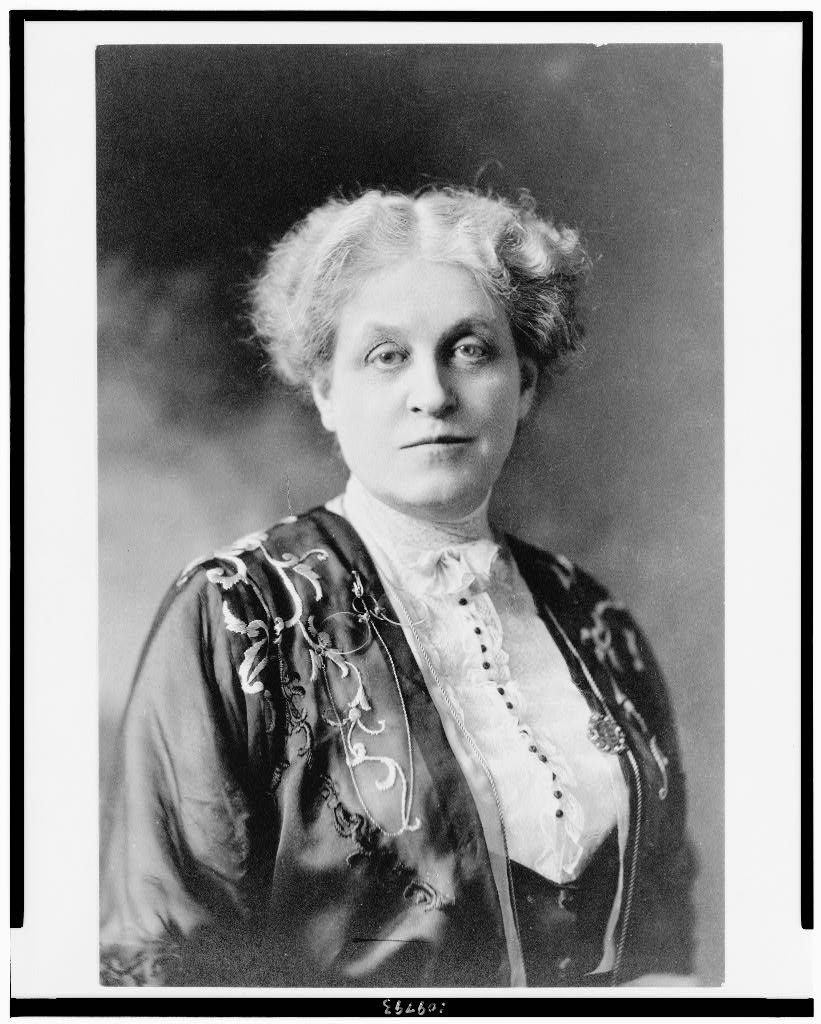
As the century drew to a close, the nature of the women’s campaign changed. Women’s suffrage had become part of what was presented as a forward-looking set of policies aimed at improving democracy. Racial policies that were seen as progressive included maintaining the supposed natural superiority of native-born white Americans, whose political strength could be increased with women’s suffrage, particularly in contrast to that of new immigrants, who were flooding in to the West in the early years of the 20th century. These were more western than eastern (or southern) notions of the Americanism that was being created in the post-Civil War nation. The arguments for equality and women’s suffrage at the end of the 19th and beginning of the 20th centuries were in decline; elitism, nativism and white supremacy were more attractive. As an anonymous Wyoming legislator is reported to have said when women got the vote in that territory: ‘Damn it, if you are going to let the niggers and pigtails vote, we will ring in the women, too.’ Southern white women joined the movement at the turn of the century and shifted the focus towards white supremacist arguments. Women’s suffrage lost its connection with racial equality, which, from the late 1860s, had been shaky anyway. Carrie Chapman Catt was elected leader of the National American Woman Suffrage Association in 1900, succeeding Anthony, who was 80 that year. Catt had been born in 1859 and so was not part of the generation that had been radicalised over abolitionism and the Civil War. She represented a more right-wing attitude than that of Stanton and Anthony and was prepared to stir up resentment against ‘the votes possessed by the males in the slums of the cities, and the ignorant foreign vote’. This nativist sentiment was gaining ground at the end of the 19th and the beginning of the 20th centuries, with the influx of foreign immigrants. Carrie Catt had begun her lecturing career with such titles as ‘America for Americans’, criticising the morals and manners of new immigrants. The racial faultline running through the US women’s suffrage movement was never more obvious than in the southern states during the early 20th century. There was particular concern among southern politicians to stop black women from becoming enfranchised because they were thought to be better educated than black men, more likely to be assertive about their rights and more difficult to bully into submission, as this would offend the sense of gallantry of white southern gentlemen.
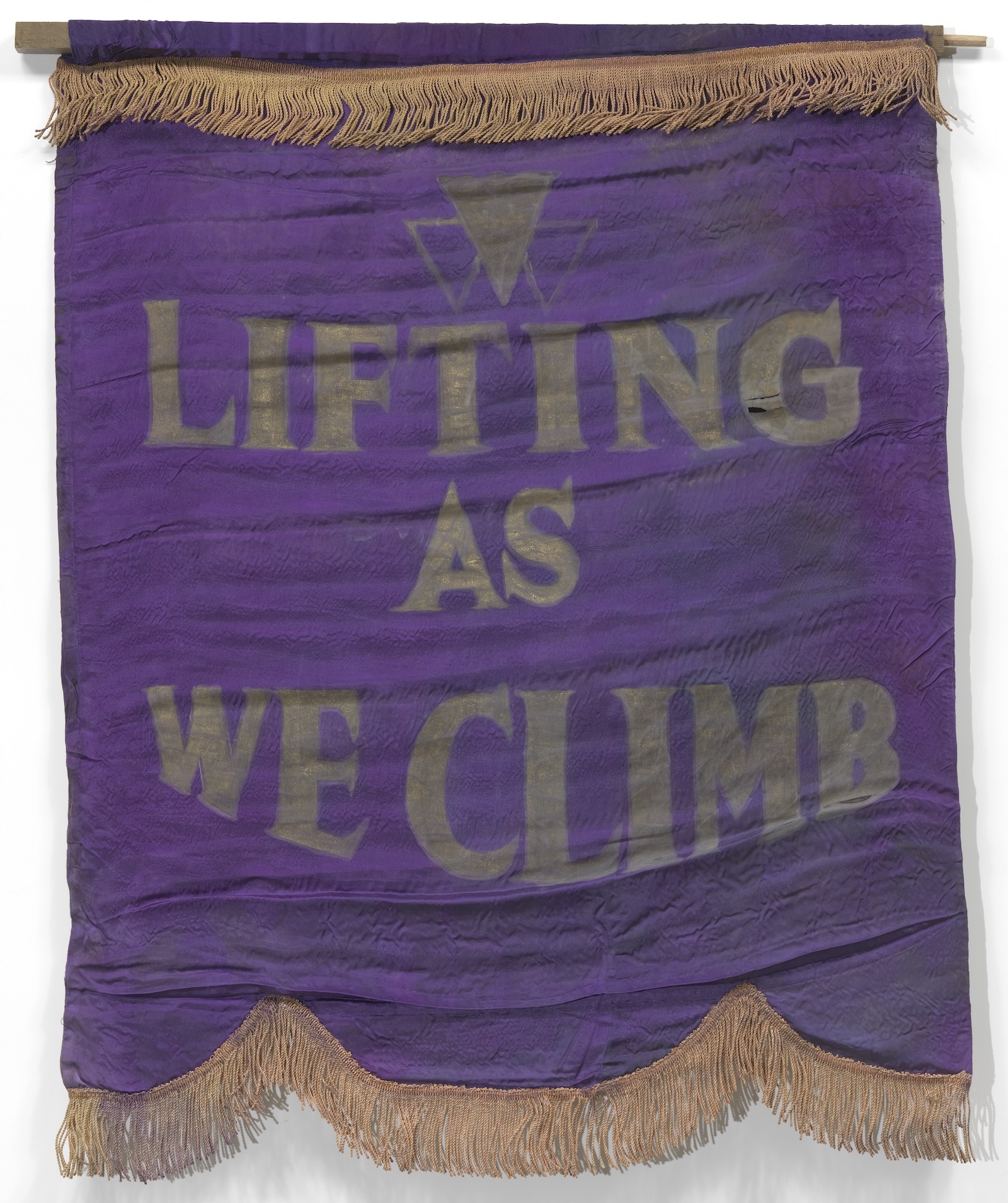
The National American Woman Suffrage Association (NAWSA) meeting held in New Orleans in 1903 was racially segregated so that, for example, Sylvanie Williams of the National Association of Coloured Women was delegated to attend the meeting in what was her own home city but was not then allowed to attend. Also in 1903 the NAWSA voted to allow state affiliates to determine their own entrance qualifications, to accommodate the developing southern suffragist groups who would wish to be whites-only organisations fighting for a whites-only vote. The executive board of the NAWSA was forced to make a public statement about its attitude towards black women as potential voters. They endorsed a state’s position on rights regarding the question of giving black women the vote, so the southern states could write in an opt-out clause. At the following annual meeting, in the District of Columbia, black women were admitted. One, Mary Church Terrell, challenged a motion calling for federal protection for children and animals by adding that the Convention should stand up ‘also for Negroes’. At the beginning of the 20th century black women had slipped so far down the agenda that they were no longer being considered as part of substantive motions; they were being thought of along with animals. The process of exclusion, which was eventually going to disenfranchise them, was well underway.
As the suffrage battle continued state by state, white supremacy was an important factor in the strategy of the suffragists, who needed to develop southern support for a female suffrage amendment. The historian Rosalyn Terborg-Penn emphasises that this was not only a southern prejudice; in 1915 a women’s suffrage amendment to the state constitution was lost in New York when ‘white voters were heard to have said that they changed their minds about supporting the amendment when they saw so many black women campaigning for it’. The glaring political fact of life in the US was not a gender division, but a racial one. The black male franchise had already been clawed back in the southern states under the Jim Crow laws.
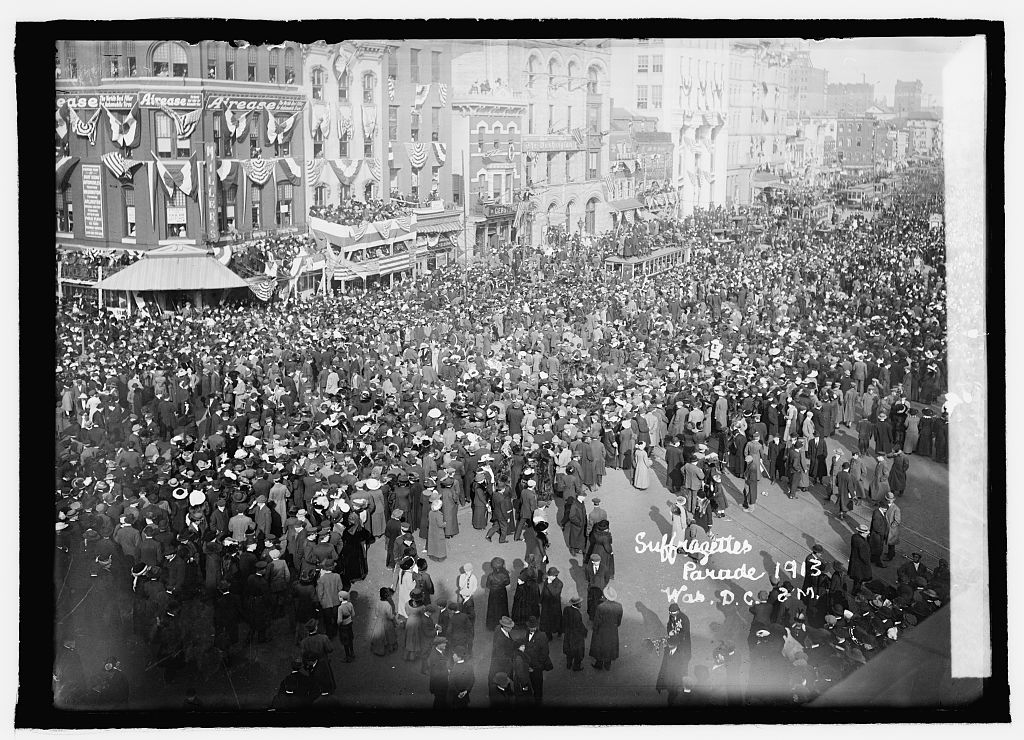
The suffragists planned a great parade in Washington, DC on March 3rd, 1913, the day before the inauguration of President Woodrow Wilson. It was led by the flamboyant campaigner Inez Milholland in a cape and riding a white horse. Despite the imagery of heroic virtue, behind the scenes there were divisions over race among the campaigners. Some white women delegates said they would not march if black women participated, so the NAWSA established a segregationist solution by having black women marching, but in their own section at the end of the parade. This obliged even integrated women’s suffrage organisations to ask their black members to go to the back of the march. Catt felt the South had to be placated with segregation, though it was not invariably to the exclusion of black women; she urged white southern women to stay away from the 1916 annual convention in Chicago because the delegates would be mainly black. Anti-suffragists argued that women’s suffrage would mean ‘Negro rule’ in some states where black people were numerous, thus mixing racism with sexism. It was argued furthermore by Democrat supporters that black women would vote Republican, so black female voting would destroy the Democrats in the South. In response, suffragists could argue that poll taxes and literacy tests would ensure that black women would be easily disenfranchised, just as black men had been. It became expedient to argue that the white supremacist vote would be increased by women’s voting. In 1913 Kate Gordon organised the Southern States Woman Suffrage Conference, where suffragists planned to lobby state legislatures for laws that would enfranchise white women only. ‘White supremacy will be strengthened, not weakened, by women’s suffrage,’ was Catt’s argument when trying to win over Mississippi and South Carolina. The 19th, or Susan B. Anthony, amendment to the constitution, guaranteeing all women the vote, was finally passed in 1920 after President Wilson had backed it (Anthony had died in 1906). The enfranchisement of women in the US was followed by the disenfranchisement of black women in less than a decade after the 19th Amendment gave them the vote. This was done by a variety of devious means, learned from the experience of disenfranchising black men. One recorded example was in Columbia, South Carolina, where black women were told to wait to register; they waited and waited – some black women were prepared to wait for 12 hours to register their vote – then, the following day, property tax requirements were declared mandatory and set at $300 worth of property. As The Crisis (‘A record of the darker races’) notes, for women who could fulfil this requirement:
‘Instead of being required to read the constitution, as the law provides, they were given sections from the civil and criminal codes of the state to read which they did read in an intelligent and orderly manner. They were then asked to explain these laws, a thing they refused to do since it was not required by law, and as they knew it was an attempt on the part of the board to disqualify them. The registrars thereupon refused to give the women registration certificates.’
By such means the majority of the black female population of the South was disenfranchised. Black women suffragists sought assistance from white women suffragists, who had formed the League of Women Voters. As a liberal compromise, their conference in Cleveland, Ohio in 1921 agreed neutrality: they would both listen to black women’s complaints and do nothing about them. Similarly, the more radical National Woman’s Party had worked out their position: they said that as black women were discriminated against in the same way as black men, this was therefore a race issue not a women’s rights issue, so the Woman’s Party as a feminist, not a social justice organisation, felt under no obligation to help. Individual suffragists throughout the history of the suffrage movement were sympathetic to black women. Anthony, the most prominent example, addressed black audiences and had no doubt about the immorality of racial discrimination. She felt justified in compromising on race to placate the white supremacists of the South, because women were more moral than men and women would end racism when they got the vote, through the political exercise of their higher morality. The story of black women and the vote was omitted from the triumphalist histories written by the leaders of the movement at the time of enfranchisement in 1920. They wanted a history of just struggle towards victory, not a story of political compromises. When black historians were looking at US history in the 1960s and 1970s, their focus was on rediscovering prominent black suffragists, so they could claim their rightful share of this victory. No one seemed to find it in their interest to point out the marginalisation of black women from power in the suffrage movement. Black women were not able freely to exercise their right to vote until the gains of the civil rights movement in the 1960s.
Jad Adams’ Women and the Vote: A World History is published by Oxford University Press.



